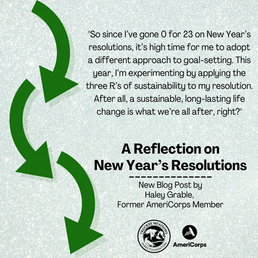Invasive Species and You“How we can all do our part to Stop the Spread”
blog by Sadie Smith and Peter Jordan
Lead Wetland Restoration Technicians
When most people think of the term ' 'invasive species' ' they often associate it with species of foreign origin or exotic nature. Many of these species have been imported into the U.S, ultimately becoming a part of their new foreign habitat. Burmese pythons in the Everglades, feral pigs in Texas and European starlings across the country are a few of the most common imports. While these are all great illustrations of invasive species based on the concept of being an imported species, they fail to encompass the full nature. The phrase “imported species” is a bit vague. A better one would perhaps be “species from a different region.” The difference between the two is subtle, but the distinction is actually very important. It means that invasive species can technically be from the same continent, even country, to the place they are invading. To be more specific, if a species is introduced to anywhere in the world it did not originally evolve and adapt to co-exist within, then it is an invasive species. In some cases, as with chicory, these non-native species are able to cohabitate and do not out compete the existing native species. However, more often than not, these invasive flora and fauna are able to take over and displace the native species already existing in the ecosystem. This has countless destructive effects on the environment which ultimately harm us in the long run.

The spread of invasive species is an extensive problem, but not so big that we, as individuals, cannot do our part to help. First and foremost is to be knowledgeable of the invasive species in your area. Most federal and state environmental agencies have online databases with comprehensive lists of invasive plant and animal species by region or sometimes even county. Here is the list from the Nevada Department of Agriculture for Washoe County invasive plants. These are great places to start learning what to look for as you walk or even drive through your neighborhood and parks. Once you have an idea of what to be on the lookout for, learn about how they spread. Many invasive plants spread very quickly on their own once mature. All it takes is one stray seed to get that population started! This is why it is essential to brush off loose seeds or vegetation off of yourself, any animal companions, or travel gear before leaving outdoor locations. Reducing the chance of viable invasive plant material reaching a habitat it would otherwise be restricted from is an essential step in stopping their spread. The same concept applies to aquatic invasive species such as zebra mussels. Making sure to thoroughly rinse off boats and wading gear before and after entering bodies of water is a small but hugely impactful step everyone can take to make a huge difference.

If you are lucky enough to have access to a green space that you can cultivate, skip the ornamental species and try and create a pocket of native habitat. Small refuges of native species like this can go a long way in supporting their success over invasive species in the greater ecosystem. Even a vegetable garden can become a haven for native species that can also benefit your overall vegetable health. Wildflowers attract bees and butterflies to pollinate the tomatoes, while ladybugs and spiders need the extra hiding places to stalk the pests that want to eat your cabbages. Furthermore, native plants under your care with the benefits of weeding and access to water during hard times are given an edge against the invasive ones. In some ways, these carefully tended spaces can become strongholds against the invaders.

When doing research into invasive species, the amount of information can be overwhelming. Invasive species seem to be everywhere, and spreading quickly. There is hope though! Across the globe, restoration projects like the one happening at the Rosewood Nature Study Area are taking the fight against invasive species head on. Progress in being made, slowly but surely. We as individuals can do our part. Be conscious of which invasives are growing in your area, take the time to look out for hitchhikers, and do your best to promote native biodiversity and habitat growth where you can. We can all do our part to stop the spread of invasive species.













google seo…
무료카지노 무료카지노;
03topgame 03topgame
gamesimes gamesimes;
Fortune Tiger…
Fortune Tiger…
Fortune Tiger…
EPS Machine…
EPS Machine…
seo seo
betwin betwin;
777 777;
slots slots;
Fortune Tiger…
谷歌seo优化 谷歌SEO优化+外链发布+权重提升;
Dive into a world of creativity with Google's Emoji Kitchen, where emojis are reimagined and combined into unique, expressive illustrations. <a href="https://emojikitchen.biz/">https://emojikitchen.biz/</a>
代发外链 提权重点击找我;
google留痕 google留痕;
Fortune Tiger Fortune Tiger;
Fortune Tiger Fortune Tiger;
Fortune Tiger Slots Fortune…
站群/ 站群;
万事达U卡办理 万事达U卡办理;
VISA银联U卡办理 VISA银联U卡办理;
U卡办理 U卡办理;
万事达U卡办理 万事达U卡办理;
VISA银联U卡办理 VISA银联U卡办理;
U卡办理 U卡办理;
온라인 슬롯 온라인 슬롯;
온라인카지노 온라인카지노;
바카라사이트 바카라사이트;
EPS Machine EPS Machine;
EPS Machine EPS Machine;
EPS Machine EPS Machine;
Nhà cái FM88 là một Nhà cái nằm tại khu vực Châu Á với số lượng người tham gia cực kỳ khủng. Hầu hết thành viên sẽ đến với thiên đường cá cược này và tham dự vào rất nhiều trò chơi hấp dẫn. Chất lượng sản phẩm tại đây luôn luôn được đánh giá cao bởi các khách hàng. Nhà cái còn được chứng nhận bởi PAGCOR và rất nhiều giấy phép từ các địa điểm uy tín quốc tế. https://fm88.guru/
When you have some free time, Football Bros is the perfect way to kill it. A few quick matches can easily turn into hours of fun.